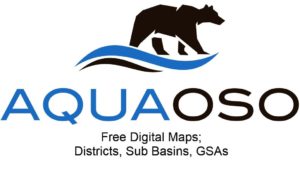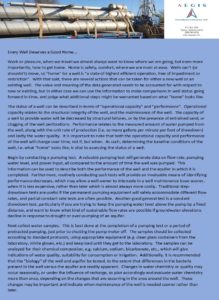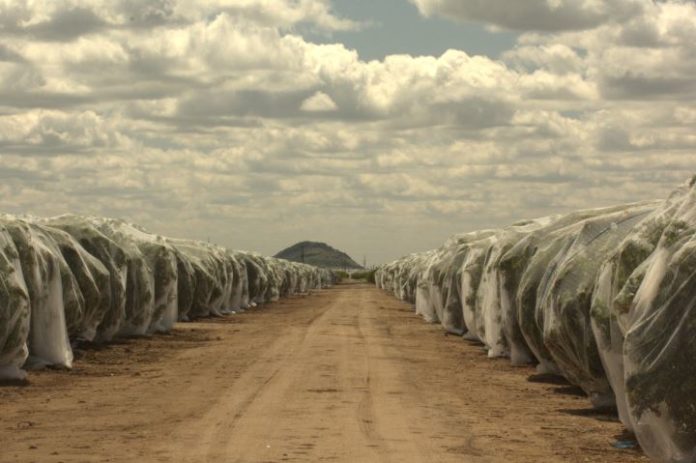 The East Kaweah Groundwater Sustainability Agency held its Technical Advisory Committee on Friday, April 5, 2019 at the Exeter Museum located appropriately in Exeter. Chairman Tim Gobler, Wutchumna Canal called the meeting to order about 10:00 am and we all introduced ourselves. At the beginning I counted 17 folks in the room besides those at the board table.
The East Kaweah Groundwater Sustainability Agency held its Technical Advisory Committee on Friday, April 5, 2019 at the Exeter Museum located appropriately in Exeter. Chairman Tim Gobler, Wutchumna Canal called the meeting to order about 10:00 am and we all introduced ourselves. At the beginning I counted 17 folks in the room besides those at the board table.  Only six were growers, the rest were staff from other GSAs and Non-Government Organizations. Dale West Stone Corral Irrigation District moved to approve the minutes and the committee did so.
Only six were growers, the rest were staff from other GSAs and Non-Government Organizations. Dale West Stone Corral Irrigation District moved to approve the minutes and the committee did so.
EKGSA Executive Director Michael Hagman spoke about developing data for a reasonable path to sustainability by 2040. Matt Klinchuch, Provost & Pritchard said the computer model is ready for crunching the data and the both agreed the Groundwater Sustainability Plan isn’t ready and the model will help with writing the GSP.
Klinchuch showed a map with the new management areas, including four white areas that behave very differently depending on the geographical location. Hagman said he likes it but he wants feedback. Klinchuch said there is the real possibility to bring some surface water to the some of the white areas. Hagman said they don’t want to look at any neighbors as enemies. In his view there may be a need for GSA wide Prop 218 election to raise fees to pay for the SGMA costs of monitoring. He said he believes it will pass when the time comes. Gobler said on the data collection side it’s more of up to the GSA but on white area matters the county needs to be involved. That may sound like he’s stating the obvious but considering the magnitude of detail needed to present a clean, well-written GSP can make or break an area; especially the vulnerable white areas. There are 20 and 40 acre white areas within the boundaries of water districts. There is some clean up to take place in assigning determination. Stacy Silva of New Currents asked about monitoring and Hagman said there should be a monitoring well or two but there are also meters,  evapotranspiration but the monitoring will be done by the GSA and not the various water districts. Landowner Karen Yohannes, who also brought incredible lemon/blue berry scones with frosting, thank you Karen, asked about each ID being its own management area. Hagman, GM of Lindmore ID said his district has kept good groundwater supplies through drought and plenty. He said he doesn’t know exactly how much water is being pumped. There also has to be a round up of domestic wells to determine di minimis pumping He spoke with engineer Dennis Keller about what assumptions can be made on pumping. That’s one advantage of having the districts in play – the institutional knowledge. Another consideration is the districts’ ability to bring in 215 and Class I and II water from Friant. He said the GSA may have to purchase two groundwater monitoring wells per management district to test against the other well monitoring sources.
evapotranspiration but the monitoring will be done by the GSA and not the various water districts. Landowner Karen Yohannes, who also brought incredible lemon/blue berry scones with frosting, thank you Karen, asked about each ID being its own management area. Hagman, GM of Lindmore ID said his district has kept good groundwater supplies through drought and plenty. He said he doesn’t know exactly how much water is being pumped. There also has to be a round up of domestic wells to determine di minimis pumping He spoke with engineer Dennis Keller about what assumptions can be made on pumping. That’s one advantage of having the districts in play – the institutional knowledge. Another consideration is the districts’ ability to bring in 215 and Class I and II water from Friant. He said the GSA may have to purchase two groundwater monitoring wells per management district to test against the other well monitoring sources.
Johnny Gailey of Green Acres Ag Consulting asked about what changes in relationships between white areas and the districts. He said the pumpers in white areas will take a harder hit because they aren’t bringing in water, only pumping. He said whatever the native supply is should be allocated to the area it naturally occurs. He said the EKGSA will help the white areas but the individual irrigation districts aren’t interested in adopting the white areas. However, having said that when excess water comes along it has to go somewhere; if the districts’ ability to take recharge is at maximum it would be wise to sink that water as close as possible to the district’s borders to help prevent underground drift. Gobler asked to call the question on recommending the management areas to the EKGSA board. Right about then one of the committee members left the room and there wasn’t a quorum, then there was again. Hagman said he feels he has consensus direction and can move forward based on that.
Klinchuch next brought up minimum thresholds and using groundwater levels as proxy for undesirable results. He said a study of well hydrographs needs to be completed for the best results. Unfortunately that was completed in time for power point presentation. There were a couple of dozen locations throughout the GSA following contours mostly that were charted. Using that information and the depth to the aquifer base and distance to ground level trends were being established. Establishing minimum thresholds isn’t an easy task. Klinchuch said he wouldn’t recommend a threshold in any portion of the GSA at this time. He said it would be best to follow the base of aquifer to water depth closer before the committee should pass a finding on to the board. Hagman said there are many challenges but the federal contract areas have known the details since the 1940s. He said for the Lindmore ID area the threshold could be developed relatively easier but the area to the west might need more than one threshold. He said defining the minimum  threshold based on management area would be the best way to start. He said developing the first generation of minimum thresholds are going to be very challenging. Should the established level for Lindmore (240 feet I think) be exceeded then more drastic action will need to be taken.
threshold based on management area would be the best way to start. He said developing the first generation of minimum thresholds are going to be very challenging. Should the established level for Lindmore (240 feet I think) be exceeded then more drastic action will need to be taken.
Gobler said ultimately minimum threshold obviously can’t be the bottom of the basin or all wells going dry. He wants to hear more from the committee members and one of the events brought up was the zero allocations for Friant imposed politically. How did that event impact things? Rhetorically. Hagman suggested Klinchuch focus on one data set of 100 percent precipitation as the first basis for studies. There are unlimited variables that could be plugged in and come up with unlimited  results but this is a finite situation with a deadline. Klinchuch said there it would be unrealistic to try to manage with one threshold for the entire GSA let alone the sub basin. Gailey reminded folks there is a major socio-economic factor in place. There will be harm and there will be help. It should be included in the GSP. Paul Hendrix, Executive Director of the Mid Kaweah GSA said his GSA is using similar data prepared by GEI and has been using linear projection to 2040 of what the threshold would be.
results but this is a finite situation with a deadline. Klinchuch said there it would be unrealistic to try to manage with one threshold for the entire GSA let alone the sub basin. Gailey reminded folks there is a major socio-economic factor in place. There will be harm and there will be help. It should be included in the GSP. Paul Hendrix, Executive Director of the Mid Kaweah GSA said his GSA is using similar data prepared by GEI and has been using linear projection to 2040 of what the threshold would be.
Gobler asked Hagman to state a recommendation and Hagman said he’d like the board to direct Klinchuch to focus on the 100 percent hydrology as opposed to the more conservative view Mid Kaweah is taking. The aquifer in EKGSA is often shallower than the MKGSA. Actually engineer Nick Keller hammered it when he said it’s very complex.
Next Hagman addressed using groundwater levels as proxy has its pros and cons. Klinchuch said there are at least three undesirable results that can be directly weighed against the groundwater level. I was surprised to find out there are differing opinions about subsidence. He said there are questions as to whether holding water levels stable will prevent subsidence. This is after all a tech committee. It appears from repeated mapping of the area the subsidence rate in the EKGSA is about an inch a year for the past 50-years. Hagman said one of the important things being closely observed will be any subsidence near the Friant Kern Canal. Klinchuch said there really isn’t a correlation between water quality and water level, if I understood correctly. By the way this is all based on IF I understood correctly. We spent a great deal of time looking at hydrographs and other slides representing data that was very unclear to my mind. Klinchuch said monitoring wells should be upgradient to any toxic waste plums. Not really but he did say there are GAMA Groundwater maps from DWR that shows constituents of concern and the Minimum Constituent Level would be a better method to avoid the undesirable results of deteriorating water quality. A GSA isn’t really supposed to be policing water quality; its duty is to not exacerbate the situation. Hagman suggested Klinchuch present the board with the three best proxy options. The next meeting of the East Kaweah GSA will be May 3rd at 10am.
DISCLAIMER OF RESPONSIBILITY; Waterwrights strives to provide his clients with the most complete, up-to-date, and accurate information available. Nevertheless, Waterwrights does not serve as a guarantor of the accuracy or completeness of the information provided, and specifically disclaims any and all responsibility for information that is not accurate, up-to-date, or complete. Waterwrights’ clients therefore rely on the accuracy, completeness and timeliness of information from Waterwrights entirely at their own risk. The opinions expressed in this report are those of the author and do not represent any advertisers or third parties.
ALL RIGHTS RESERVED. Copyright 2019 by Don A. Wright
SGMA The Sustainable Groundwater Management Act of 2014 calls for the formation of Groundwater Sustainability Areas within Basins and Sub-basins to develop Groundwater Sustainability Plans.
EAST KAWEAH GSA 315 E. Lindmore Street, Lindsay, CA 93247. Telephone 559/562-2534. Mailing address PO Box 908 Lindsay, CA 93247 Meetings are generally the 4th Monday of the month at the Lindsay Wellness Center at 3:00 pm.
Members: County of Tulare, City of Lindsay, Exeter ID, Ivanhoe ID, Lindsay Strathmore ID, Lindmore ID and Stone Corral ID
Staff: Michael Hagman – Executive Director, Joe Hughes – Attorney
DWR Listing: Basin San Joaquin Valley, Sub Basin Kaweah 5-022.11































